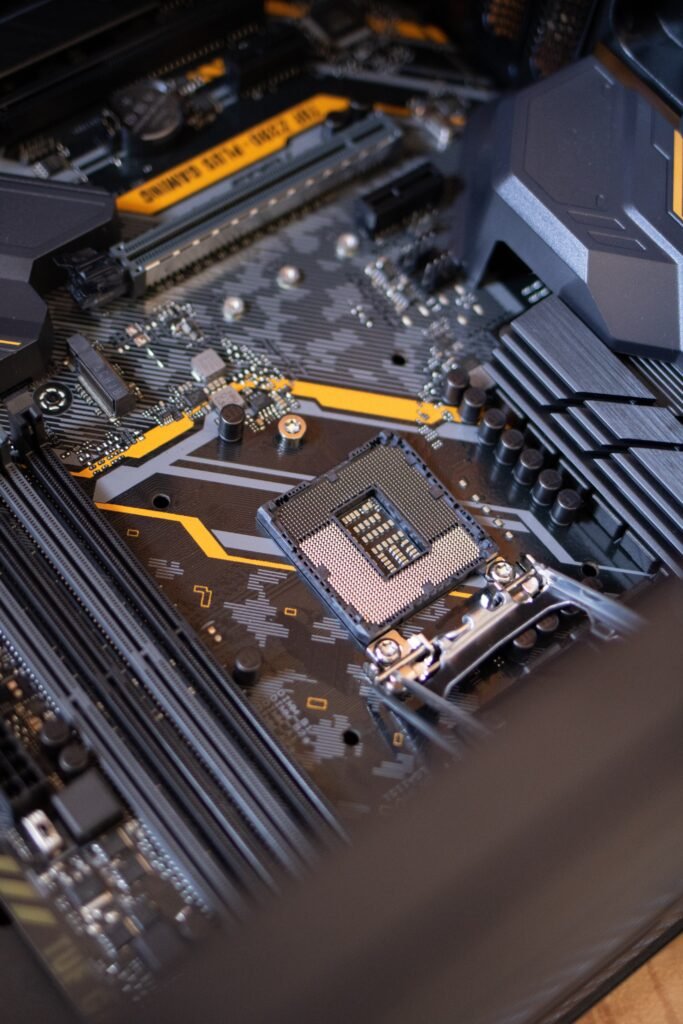TPM in 2024: Why Your PC Absolutely Needs It for Enhanced Security

In the unexpectedly evolving panorama of cybersecurity, one term that has gained full-size prominence is TPM or Trusted Platform Module. This tiny chip, frequently unnoticed by using the average PC consumer, plays a vital function in fortifying the security of your PC. In this article, we can delve into the intricacies of TPM, exploring its significance, abilties, and why, in 2024, it has turn out to be a non-negotiable requirement for Windows 11.
Understanding TPM:
1. What Exactly is a TPM?
At its center, a Trusted Platform Module is a microchip meticulously designed to provide robust hardware-primarily based protection and encryption capabilities. Acting as a behind-the-scenes parent, the TPM is dedicated to safeguarding touchy facts and making sure the privacy of the user.
2. TPM Standards:
The evolution of TPM is marked by number one standards: TPM 1.2, brought in 2011, and the trendy launch, TPM 2.0, launched in 2014. Each model delivered enhancements, with TPM 2.Zero supplying increased cryptographic agility, self-encryption talents, and versatility to fulfill destiny security requirements.
Key Security Capabilities of TPM:

1. Secure Key Generation and Storage:
One of the primary features of a TPM is the stable generation and garage of encryption keys. These keys, vital for statistics safety, are housed in the TPM’s tamper-resistant storage, making them resilient against external attacks.
2. Hardware Authentication:
The TPM acts as a hardware root of agree with, uniquely identifying the device. This feature supports trusted boot and authentication, validating the safety of the hardware configuration.
3. Disk Encryption:
Full-disk encryption gear, like BitLocker, leverage the TPM to stable encryption keys. The keys continue to be sealed within the TPM, unlocking get right of entry to to encrypted statistics most effective while the hardware is deemed steady.
4. System Integrity Validation:
Secure Boot, a essential security function, utilizes the TPM to authenticate booting software. This procedure ensures that boot additives have not been tampered with before launching the working system.
5. Digital Rights Management (DRM):
TPMs play a pivotal role in content security mechanisms, implementing usage guidelines and licensing guidelines for copyrighted media or software program. This is mainly full-size in an generation in which digital rights are a developing situation.
Why Windows 11 Requires TPM:
1. Microsoft’s Mandate:
In a formidable pass, Microsoft has mandated TPM 2.Zero assist for all Windows 11 gadgets. This decision, a part of their stringent new hardware safety necessities, has sparked discussions and raised questions on the need of this apparently stringent technique.
2. Universal Baseline for Security:
The selection to require TPM 2.Zero help stems from Microsoft’s commitment to setting up a wellknown baseline for safety abilties across all Windows 11 hardware. This circulate pursuits to bolster structures in opposition to emerging safety threats, which includes firmware attacks, BIOS vulnerabilities, ransomware, and supply chain attacks.
3. Assurance for Enterprise Customers:
By leveraging advanced TPM capabilities, inclusive of hardware-based root of consider and steady encryption key era, Microsoft seeks to offer assurances to company clients regarding the trustworthiness of Windows eleven systems. This strategic pass aligns with the developing want for robust cybersecurity measures in company environments.
In the subsequent element, we will explore TPM 2.0’s key upgrades over TPM 1.2 and the way to test in case your PC has a TPM. Stay tuned for a complete knowledge of why TPM is necessary in 2024.
TPM 2.0 – And The Key Improvements Over TPM 1.2:

1. Expanded Cryptographic Agility:
TPM 2.0 brings a substantial enhancement to cryptographic agility with the aid of helping uneven encryption for both ECC (Elliptic Curve Cryptography) and RSA encryption schemes. This extended capability ensures adaptability to evolving cryptographic standards, a vital issue inside the ever-changing landscape of cybersecurity.
2. Enhanced Authorization Components:
The evolution from TPM 1.2 to TPM 2.Zero includes upgrades in authorization additives. This interprets to more delicate controls over get admission to and rules, presenting an brought layer of security and versatility for device directors.
3. Self-Encryption for Added Protection:
One super function of TPM 2.0 is its self-encryption functionality. This way that even within the unlucky event of the TPM being tampered with or stolen, the encryption keys and secrets saved inside continue to be covered. This represents a enormous development in mitigating capability safety breaches.
4. Algorithm Flexibility:
Recognizing the want for flexibility in assembly destiny safety standards, TPM 2.0 consists of set of rules flexibility. This ahead-thinking technique ensures that the TPM can seamlessly adapt to rising cryptographic necessities, reinforcing its long-time period viability.
5. Defense Against Physical Attacks:
TPM 2.0 introduces improvements in protective cryptography, aiming to decorate resistance in opposition to physical assaults. This is a crucial consideration in an era wherein cybersecurity threats encompass now not most effective virtual exploits however additionally physical intrusions.
Checking If You Have a TPM:
Now that we’ve got explored the importance and evolution of TPM, it’s vital to determine whether or not your PC is equipped with this essential security characteristic. Here are 3 strategies to check for TPM support:
1. Through System Information:
Go to Start and search for “System Information.”
Under System Summary, look for a “TPM: 2.0” list, confirming TPM support.
If you see TPM 1.2 or get hold of a “TPM Not Detected” error, your device may also lack TPM 2.0 compatibility required for Windows eleven.
2. Through Device Manager:
Open Device Manager.
Expand the Security devices class.
Look for a “Trusted Platform Module 2.Zero” listing to affirm Windows recognizes TPM support.
Note: TPM modules can also occasionally seem as “Trusted Platform Module 1.2,” so confirming TPM 2.Zero is critical.
3. Within System Firmware:
Reboot your laptop into UEFI/BIOS setup.
Find the TPM settings (underneath safety, advanced, or trusted computing categories).
Confirm that TPM hasn’t been disabled and is about to an enabled/energetic kingdom.
4. Initializing and Taking Ownership of the TPM:
Once you’ve got showed TPM 2.Zero support, the following step involves initialization and taking ownership of the TPM. While Windows eleven handles these steps robotically at some stage in installation, manual configuration can be required in some times. In the subsequent component, we’ll delve into the method of initializing and taking possession of the TPM, making sure your device is absolutely prepared with this essential security element.
Stay tuned for a complete manual on the way to spark off your built-in virtual bodyguard and increase the security of your PC inside the generation of Windows eleven.
Conclusion:
In the rapidly evolving panorama of cybersecurity, the Trusted Platform Module (TPM) stands as a silent guardian, fortifying the security of your PC in methods often not noted by the average person. As we conclude our exploration into the importance of TPM in 2024, it will become evident that this tiny chip plays a enormous function in protective touchy statistics, making sure privateness, and meeting the stringent safety requirements of Windows eleven.
TPM’s evolution from model 1.2 to the modern-day 2.0 preferred brings forth more suitable cryptographic abilties, self-encryption, and versatility, aligning with the ever-converting demands of cybersecurity. Its key protection competencies, from secure key technology to hardware authentication and disk encryption, make it an fundamental aspect in the defense against a myriad of cyber threats.
Microsoft’s decision to mandate TPM 2.0 for Windows 11 displays a commitment to establishing a normal protection baseline, fortifying platforms in opposition to emerging threats and assuring corporations of the trustworthiness in their computing environments.
As customers navigate the digital panorama, the function of TPM will become an increasing number of important, acting as a virtual bodyguard for their PC and facts. In the era of Windows eleven, wherein protection takes center degree, know-how and appreciating the significance of TPM isn’t just endorsed however crucial.
FAQs (Frequently Asked Questions):
Q1: What is the primary position of a TPM in a PC?
A1: A Trusted Platform Module (TPM) is a microchip designed to provide hardware-primarily based safety and encryption functions. Its number one function includes stable key technology and storage, hardware authentication, disk encryption, device integrity validation, and support for virtual rights control.
Q2: Why does Windows eleven mandate TPM 2.Zero assist?
A2: Microsoft has mandated TPM 2.0 support for Windows 11 to set up a established safety baseline across all hardware. This requirement pursuits to beef up systems in opposition to current safety threats which includes firmware assaults, BIOS vulnerabilities, ransomware, and supply chain assaults.
Q3: How can I check if my PC has a TPM?
A3: You can test for TPM assist via numerous strategies. In Windows System Information, search for a “TPM: 2.0” list. In Device Manager, test for a “Trusted Platform Module 2.0” list. Additionally, you may inspect TPM settings to your UEFI/BIOS firmware.
Q4: What are the key upgrades of TPM 2.0 over TPM 1.2?
A4: TPM 2.Zero brings extended cryptographic agility, more desirable authorization additives, self-encryption for delivered protection, algorithm flexibility, and defense towards bodily assaults. These upgrades make TPM 2.Zero better geared up to address evolving safety challenges.
Q5: Is TPM simplest critical for Windows 11 customers?
A5: While Windows 11 mandates TPM 2.0, TPM isn’t distinctive to this running machine. It has been used in diverse contexts for safety in computing gadgets. Its importance extends past Windows eleven, making it a valuable asset for securing PCs in general.
Q6: Can I upgrade my PC to meet the TPM 2.Zero requirement for Windows 11?
A6: Yes, you may upgrade your PC to satisfy the TPM 2.Zero requirement. This can involve allowing TPM assist in firmware settings, putting in a discrete TPM module, or acting a smooth installation on supported hardware. Various alternatives cater to unique PC configurations.

1 thought on “What Is a TPM And Why Does Your PC Need One”